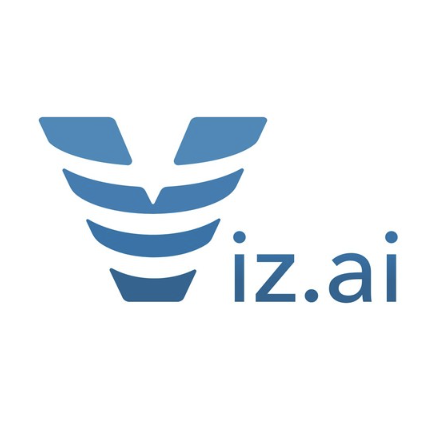
A (somewhat) popular metric used to evaluate SaaS startups’ capital efficiency is the burn multiple.
This metric is calculated, for a SaaS company, by dividing the net cash burned by the net new ARR (Annual Recurring Revenue) in a given period. The lower the number the better, as this shows that the startup burns less capital to generate its growth. Decent burn multiples are under 2x, whereas the best are under 1x.
The burn multiple is a somewhat useful metric for startup founders and investors to assess risk and evaluate a startup’s finances. It provides insights into how efficiently a company burns cash to generate recurring revenue. Since recurring revenue is the core valuation driver - and hopefully profitability driver - of SaaS companies, the burn multiple provides a somewhat useful glance into the startup’s future.
How do you calculate a burn multiple?
To calculate the burn multiple, you would first determine the net cash burned, which is the amount of cash the company has spent in a given period, minus any financing or investment it has received. Then, you would divide this amount by the net new ARR, which is the increase in the company’s annual recurring revenue over the same period. (If you want to learn more about ARR, click here.)
For example, if a SaaS company spent $50,000 in cash in a month and generated $20,000 in net new ARR over the same period, its burn multiple would be 2.5 (50,000 / 20,000). This would indicate that the company is generating $2.50 in net new ARR for every $1 of net cash burned.
Burn multiple formula
Burn Multiple = Net Cash Burned / Net New ARR
Net cash burned is the amount of cash that the company has spent in a given period, minus any financing or investment it has received. Net new ARR is the increase in the company’s annual recurring revenue over the same period.
Remember to use the same period for both parts of the formula! And it’s important to note that burn multiple calculations should be based on accurate financial documents and balance sheet reports. These reports provide key elements such as total expenses, employee salaries, office supplies, and other business operations costs that contribute to the net burn rate. And cash - don’t mess up your cash calculation for burn; some founders use cheap bookkeeping services that don’t accurately produce cash positions every month!
What is a good burn multiple for a SaaS company?
This metric is going to vary by the stage of company/by how much ARR a company is generating. In general, SaaS startup generating lower ARR will have worse (lower) multiples. Conversely, a SaaS company with a higher ARR is likely to have a lower burn multiple, because it is generating more revenue with a given amount of capital (and it’s possible that it’s closer to profitability!).
Different burn multiples can indicate various stages of a company’s growth and efficiency. A charitable interpretation of a high burn multiple might suggest that a company is investing heavily in growth but may be at risk of running out of cash. On the other hand, a low burn multiple indicates that a company is efficiently using its capital to generate new revenue.
For example, consider two SaaS companies that both have a net cash burned of $50,000 in a given period. If one of these companies generates $100,000 in net new ARR over the same period, while the other generates only $50,000, the first company would have a multiple of 0.5 (50,000 / 100,000), while the second company would have a multiple of 1.0 (50,000 / 50,000). This indicates that the first company is more capital efficient, as it is generating more revenue with a given amount of capital.
The well-known VC firm Andreessen Horowitz has published what they consider good multiples by amount of ARR. From their blog:
| ARR | Bad | OK | Good |
| $0 - $10M | 3.8x | 1.6x | 1.1x |
| $10M - $25M | 1.8x | 1.4x | 0.8x |
| $25M - $75M | 1.1x | 0.7x | 0.5x |
| $75M+ | 0.9x | 0.5x | 0x |
These burn multiple benchmarks provide a useful reference for companies to evaluate their performance. However, it’s important to remember that burn multiples should be considered alongside other financial projections and metrics to get a comprehensive view of a company’s financial health.
Why is it important?
Efficiency matters for startups - especially for SaaS companies, which are expected to start generating gross-profit positive revenue quickly.
The burn multiple is a good metric for evaluating the financial health and growth potential of a Software as a Service company because it takes into account both gross margins/profit and sales and marketing expenses (among other expenses - but these two financial metrics are particularly important for SaaS companies). .
Gross margins/profit refer to the amount of revenue that a company generates after deducting the cost of goods sold, which includes the direct costs of producing and delivering its products or services. Gross margins are important because they indicate how much profit a company is able to generate from each sale.
Sales and marketing expenses refer to the costs that a company incurs in order to generate revenue, such as advertising, sales commissions, and lead generation. These expenses are an important factor in the financial performance of a SaaS company because they can have a significant impact on the company’s ability to generate new revenue.
The burn multiple takes both of these factors into account by dividing the net cash burned (which is lower when a company has a lot of gross profit, and is higher when a company spends a lot on sales and marketing - note in this particular moment, a lower cash burn means a company is closer to cash flow breakeven) by the net new ARR in a given period. This helps to provide a more complete picture of the company’s financial performance and growth potential, as it accounts for both the costs of generating revenue and the profits generated from those sales.
A company’s burn multiple can vary over time and may be influenced by factors such as market conditions, competition, and the company’s growth strategy. Regular monitoring and analysis of burn multiples can help identify trends and potential issues in a company’s financial performance.
VCs LOVE metrics that they can use like peanut butter, spreading it across multiple companies and different stages of company. This metric is great for that, since it can be used to compare capital efficiency across pretty much any SaaS company vs. any other. Additionally, it can be used to benchmark companies as they grow and become later stage.
As a leading SaaS accountant, we also like this metric because it’s pretty hard to argue with. We do think that it should e used in conjunction with other metrics, like the LTV to CAC. And some downsides that we will note is that it penalizes companies that are investing aggressively in R&D or that are building out their sales teams or marketing/branding. Early-stage companies should be given the opportunity to create excellent product and go to market engines, and strong brands, as this drives long-term enterprise value. So be aware that this metric does have downsides.
It’s worth noting that while a low burn multiple is generally desirable, a negative burn multiple can occur when a company is profitable and growing. In this case, the company is generating more new ARR than it’s spending, which is an excellent position to be in. However, some startups may intentionally maintain a higher burn multiple to fuel rapid growth, betting on future profitability. In fact, some VCs push their best companies to grow too quickly, resulting in a poor burn multiple. So while it’s important to understand what a VC is asking for and why, the founders should be prepared to defend their position on how much they want to invest in growth.
How do you improve your SaaS startup’s burn multiple?
To improve your burn multiple, consider the following strategies:
- Optimize marketing campaigns: Focus on targeting your market more effectively to increase the efficiency of your customer acquisition efforts. This can lead to higher net new ARR without proportionally increasing your marketing spend.
- Reduce non-operating expenses: Carefully review and cut unnecessary costs that don’t directly contribute to revenue growth. This could include streamlining administrative processes or negotiating better rates with vendors.
- Increase company revenue: Explore upselling and cross-selling opportunities with existing customers, or consider introducing new product features that can justify price increases.
-
Improve gross profit margins: While the burn multiple measures revenue growth, the cash burn component is heavily influenced by your gross profit. If your gross profit margin is less than 80%, this is an excellent area to focus on. Here are some ways to improve gross profit:
- Optimize your product delivery costs
- Negotiate better rates with suppliers or service providers
- Automate processes to reduce labor costs
- Consider restructuring your pricing model
- Enhance customer retention: Reducing churn can significantly impact your net new ARR without increasing costs, thereby improving your burn multiple.
- Invest in scalable technology: While this may increase short-term costs, scalable solutions can lead to long-term efficiency gains and improved burn multiples.
Remember, a lower burn multiple indicates that your company is using its capital more efficiently to generate growth. By focusing on these areas, you can work towards improving your burn multiple and demonstrating to investors that your company is on a path to sustainable growth and profitability.
How did the burn multiple become important?
David Sacks, a VC with Craft Ventures (he is the co-founder of the fund, and is considered one of the top SaaS investors on the planet) is known for popularizing this KPI as a key metric for evaluating the health and growth of SaaS startups.
Sacks has spoken publicly about the importance of the burn multiple as a metric for SaaS startups, and has emphasized the need for SaaS companies to focus on maximizing their capital efficiency in order to achieve long-term success. By popularizing the it as a key metric for evaluating SaaS companies, Sacks has helped to bring greater attention to the importance of capital efficiency in the SaaS industry. The burn multiple metric is starting to become more popular than LTV to CAC and is almost as popular as the Rule of 40.
Burn multiple vs Capital Efficiency Ratio
One of the best things about using a the burn multiple metric is that it is starting to over take a bastardized version of the Capital Efficiency Ratio. The capital efficiency ratio is a metric that works for traditional businesses, where it measures how much operating profit is being generated by the company’s investments. However, SaaS investors attempted to change this metric to suit the needs of recurring revenue software companies, and in our opinion it fails. In the subscription world, the capital efficiency metric only measures ARR over capital burned - in our opinion, it’s not taking into account the company’s profits as well as the Burn Multiple.
What Factors Cause a High Burn Multiple?
Understanding the factors that lead to a high burn multiple is crucial for startup founders and investors to assess risk and evaluate a company’s financial health. A high burn multiple indicates that a company burns too much money relative to the new recurring revenue it generates. Let’s explore the common causes of a high burn multiple and how they impact a startup’s finances:
- Early-stage product development and initial marketing expenses: In the early stages of a company’s life, it often needs to invest heavily in building its product and establishing initial marketing and sales efforts. During this phase, the burn multiple may appear high because these substantial upfront costs are being amortized over only a small dollar amount of new sales. This situation is often temporary as the company scales and can spread these costs over a larger revenue base.
- Lumpy enterprise sales cycles: Young companies targeting large enterprise contracts may experience significant fluctuations in their burn multiple due to the nature of enterprise sales cycles. These deals are often high-value but can take longer to close and may not occur evenly throughout the year. If a single large contract closes or fails to close within a specific period, it can greatly impact the burn multiple, making it appear unusually high or low.
- Inefficient sales and marketing (S&M) strategy: When a company spends excessively on marketing campaigns without a proportional increase in new Annual Recurring Revenue (ARR), it can lead to a high burn multiple. This often results from targeting the wrong market or using ineffective channels, causing the company to burn net new ARR at an unsustainable rate.
- Misallocation of capital (Low Return on Invested Capital - ROIC): Poor decision-making in how a company allocates its resources can lead to a terrible burn multiple. This might involve overspending on non-operating expenses or investing in business activities that don’t directly contribute to revenue growth. Startups need to carefully consider how much equity to offer and how to balance investments in different areas of the business.
- Inability to scale from low gross margin: If a company’s gross profit margins are consistently below industry standards (typically less than 80% for SaaS), it can struggle to achieve a good burn multiple. Low margins mean the company burns more cash to deliver its product or service, impacting the overall burn rate and financial projections.
- Low sales productivity: When the sales team isn’t performing efficiently, it can lead to higher burn multiples. This might be due to inadequate training, poor lead quality, or misalignment between the product and customer needs. Improving sales productivity is crucial for increasing a company’s revenue without proportionally increasing expenses.
- High revenue churn rate: A high churn rate means the company is losing existing customers faster than it can acquire new ones. This negatively impacts net new ARR and can result in a higher burn multiple, as the company needs to spend more to replace lost revenue.
- High customer acquisition costs (CAC): If it costs too much to acquire new customers relative to their lifetime value, it can lead to a high burn multiple. This is often related to inefficient marketing and sales strategies and can significantly impact a company’s burn rate.
- Overinvestment in research and development (R&D): While innovation is crucial, excessive spending on R&D without a clear path to monetization can lead to a high burn multiple. Companies need to balance their investment in product development with their ability to generate new revenue.
- Lack of operational efficiency: Inefficiencies in business operations, such as manual processes that could be automated or unnecessary overhead costs, can contribute to a high burn multiple. This might include excess spending on office supplies, inefficient use of employee time, or suboptimal business practices.
It’s important to note that while a low burn multiple is generally desirable, some startups may intentionally maintain a higher burn multiple to fuel rapid growth, betting on future profitability. The key is to find the right balance that aligns with the company’s growth strategy and financial projections.
Regular monitoring of burn multiple calculations, along with other financial metrics like burn rate, ending cash balance, and recurring revenue, can provide valuable insights into a company’s financial health. This comprehensive approach to financial management can help startup founders make informed decisions about how much money to spend on various business activities and how to allocate resources effectively to achieve sustainable growth.
Understanding these factors can help companies identify areas for improvement and work towards optimizing their burn multiple over time. However, it’s crucial to consider the burn multiple in context with other financial details and the company’s overall strategy, rather than viewing it in isolation.
What is the difference between burn rate and a burn multiple?
Burn rate and burn multiple are two related but distinct metrics that are used to evaluate the financial health and growth potential of a company.
Burn rate refers to the rate at which a company is spending its cash, typically on a monthly basis. It is calculated by taking the company’s total expenses and dividing them by the number of months over which those expenses were incurred. Burn rate is an important metric because it helps investors and company leaders understand how quickly the company is using its capital and how long it has before it runs out of cash. Check out our cash burn rate calculator here.
While burn rate focuses on how quickly a company is spending money, burn multiple measures how efficiently that spending translates into new revenue. Both metrics are essential for understanding a startup’s finances and assessing its potential for success.
Burn multiple, on the other hand, is a measure of capital efficiency for a SaaS (Software as a Service) company. It is calculated by dividing the company’s net cash burned (cash spent minus financing or investment received) by its net new ARR (Annual Recurring Revenue) in a given period. A lower number is generally seen as more favorable, as it indicates that the company is able to generate more revenue with less capital.
Understanding both burn rate and burn multiple can provide valuable insights into a company’s financial health. While a high burn rate might indicate that a company is losing money quickly, a low burn multiple could suggest that the company is efficiently converting that spend into new revenue. These metrics, along with other financial details such as ending cash balance, accounts payable, and shareholder equity, form a comprehensive picture of a business’s finances.
In summary, burn rate is a measure of how quickly a company is spending its cash, while burn multiple is a measure of how efficiently a SaaS company is using its capital to generate new revenue.











